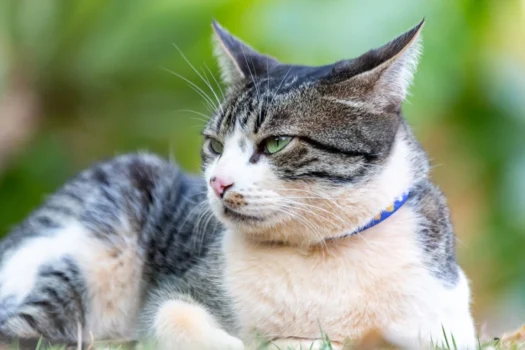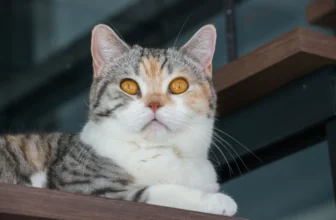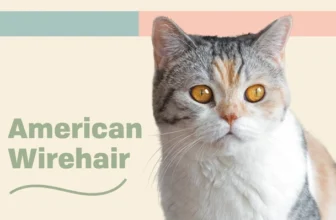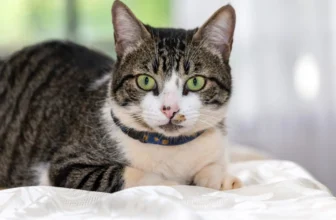Keeping your American Wirehair at a healthy weight is essential for their overall well-being and longevity. However, with so much information out there, it can be overwhelming to know where to start. As a cat owner, you want to provide your furry companion with the best care possible. That’s why we’ve put together this comprehensive guide with tips and tricks to help your American Wirehair maintain a healthy weight. From factors that affect weight to monitoring your cat’s weight to helping your cat lose weight, we cover it all. So, sit back, relax, and let’s dive into the world of cat weight management.
Why is a Healthy Weight Important?
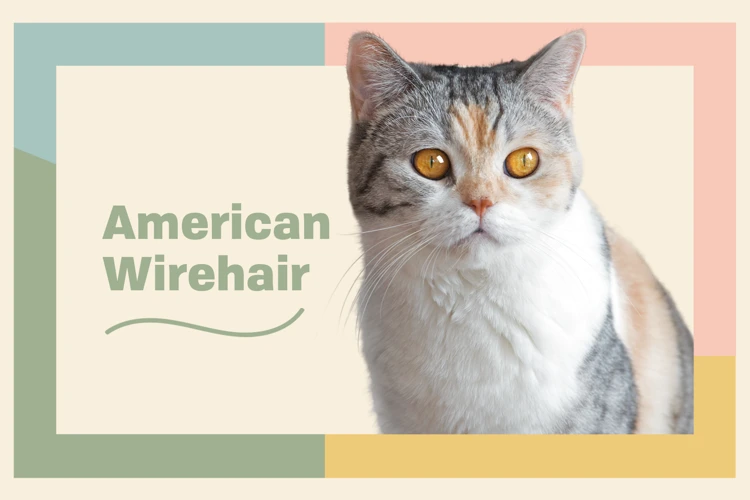
Maintaining a healthy weight is crucial for the overall well-being of American Wirehairs. It not only helps in preventing various health issues, but it can also increase the lifespan of your furry friend. In this section, we will discuss the importance of maintaining a healthy weight for American Wirehairs and the adverse effects of obesity and being underweight. Regular veterinary check-ups and maintaining a healthy diet play a vital role in your cat’s health, along with proper weight management. For more information on other health issues that your American Wirehair may face, check out our article on the benefits of regular veterinary check-ups for American Wirehairs.
Health Risks of Obesity in Cats
Obesity in American Wirehairs can lead to a range of health problems, including:
- Diabetes: An overweight cat may develop diabetes mellitus, a condition where the body produces inadequate levels of insulin. This can cause a range of symptoms, including increased thirst, frequent urination, and lethargy.
- Joint problems: Being overweight can put extra strain on your cat’s joints, which can cause pain and limit their mobility. This can lead to conditions such as arthritis and hip dysplasia.
- Heart disease: Overweight cats are at increased risk of developing heart disease, which can lead to heart failure and other serious health complications.
- Fatty liver disease: If an obese cat stops eating for any reason, their liver can become overwhelmed with fat deposits, leading to liver failure.
- Respiratory problems: Overweight cats can suffer from respiratory problems, including difficulty breathing and decreased lung function. This can be particularly problematic if your cat has an existing respiratory condition.
It’s important to note that these health risks are not limited to American Wirehairs – they can affect all cats. However, as American Wirehairs are prone to weight gain, it’s especially important to monitor their weight and take steps to prevent obesity. Regular exercise, healthy feeding practices, and consultations with your veterinarian can all help keep your cat at a healthy weight and prevent these health problems. Remember, a healthy weight can also help prevent other conditions in American Wirehairs such as /preventing-hairballs-american-wirehairs/ and /dental-care-for-american-wirehairs/.
Consequences of Underweight Cats
It’s no secret that obesity can lead to serious health issues in cats, but the consequences of being underweight can be just as detrimental to their health. Underweight cats may experience a number of negative side effects, such as:
| Consequences of Underweight Cats |
|---|
| Decreased immune system function, leaving them more susceptible to infections, diseases, and parasites. |
| Reduced muscle mass, which can lead to a weakened state and even further weight loss. |
| Poor coat and skin condition, including dryness, hair loss, and dermatitis. |
| Low energy levels and lethargy, leading to a decrease in overall quality of life. |
| Increased risk during surgery or general anesthesia due to lack of body fat and muscle. |
| Difficulty staying warm in colder temperatures. |
It’s important for cat owners to take steps to prevent underweight in their pets, especially in American Wirehairs which can be prone to certain health issues such as allergies, GI problems and ear infections. Regular veterinary check-ups can help identify any weight-related issues early on, and a tailored diet and exercise plan can help maintain or improve your cat’s weight and overall health.
Factors that Affect Weight
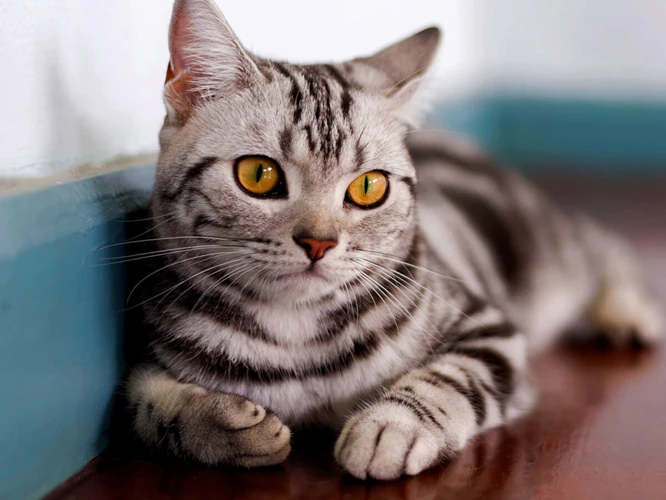
It’s important to recognize that maintaining a healthy weight for your American Wirehair can be affected by a variety of factors. These factors can be influenced by your cat’s age, gender, breed predispositions, activity level, and also their diet. Understanding these factors can help you make informed decisions when it comes to monitoring their weight. Additionally, certain health issues like ear infections, allergies, and gastrointestinal problems can also have an impact on weight. In the following sections, we will discuss these various factors in greater detail and offer guidance on how to maintain your cat’s ideal weight.
Diet
A cat’s diet is a crucial aspect when it comes to maintaining their weight. Feeding your American Wirehair a healthy and balanced diet can help them maintain their weight and prevent them from becoming obese.
What to feed: When choosing a diet for your American Wirehair, it is essential to consider their nutritional needs. Feeding them a high-quality diet that is rich in protein and low in carbohydrates can help them maintain a healthy weight. Look for foods that list meat as the main ingredient, as this will provide them with the necessary protein. Avoid foods that contain fillers, grains, and byproducts.
How much to feed: Portion control is crucial when it comes to maintaining your feline friend’s weight. It’s recommended to follow the feeding guidelines provided by the manufacturer on the food package. However, it would help if you also considered factors such as your cat’s activity level, age, and current weight when determining the appropriate portion size.
How often to feed: It’s recommended to feed your American Wirehair at least twice daily, dividing their daily food intake into equal portions. This approach will help them feel fuller for longer periods and prevent them from overeating at once.
Treats: Treats are a great way to show your American Wirehair love and affection. However, it’s essential to moderate the number of treats you give them. Treats should not exceed 10% of their daily caloric intake. It’s also recommended to choose healthy, low-calorie treats and avoid giving them table scraps.
Below is an example of a diet table that you can use to keep track of your American Wirehair’s daily food intake:
| Meal | Food Type | Portion Size |
|---|---|---|
| Breakfast | Dry food | 1/4 cup |
| Snack | Wet food | 1/4 can |
| Lunch | Dry food | 1/4 cup |
| Dinner | Wet food | 1/4 can |
Remember, diet alone might not be sufficient to help your American Wirehair maintain a healthy weight. Hence, incorporating physical activity into your feline’s daily routine can help them burn off any excess calories and maintain an ideal weight.
If you suspect that your American Wirehair might be suffering from health issues related to food, such as allergies or GI problems, consult your veterinarian for advice. You can find more information about these issues by clicking on these internal links: /amwire-allergy-mgmt/,/american-wirehair-gi-problems/.
Activity Level
Regular physical activity is crucial for maintaining healthy weight in American Wirehairs. Inactive cats are more prone to weight gain and obesity. Physical activity helps to burn calories and maintain muscle mass, thereby contributing to a healthier and leaner body. Additionally, exercise can help to improve the cat’s mood and prevent boredom and destructive behavior.
Factors Affecting Activity Level:
| Factors | Effects |
|---|---|
| Diet | A diet rich in carbohydrates and fats can contribute to lethargy and inactivity. |
| Age | Older cats may have mobility issues that make it difficult for them to engage in physical activity. |
| Indoor vs. Outdoor | Indoor cats tend to be less active than outdoor cats, who have more opportunities for play and exploration. |
| Health Conditions | Cats with certain health conditions, such as arthritis or respiratory problems, may have difficulty engaging in physical activity. |
How to Increase Activity Level:
To encourage your American Wirehair to engage in physical activity, consider the following tips:
– Provide toys and scratching posts: Interactive toys and scratching posts can entice your cat to play and climb, providing a fun and stimulating way to burn calories.
– Play with your cat: Regular playtime with your cat can help strengthen your bond as well as provide exercise. Use toys like feather wands or laser pointers to engage your cat in active play sessions.
– Create a safe outdoor space: If you have the space and live in a safe area, consider creating an outdoor play area for your cat. This can give them opportunities to explore, climb, and play.
– Encourage climbing: Cats love to climb, and providing them with tall cat trees or shelves can give them vertical space to explore and play.
– Gradually increase activity: If your cat is not used to physical activity, start slow and gradually increase the intensity and duration of playtime.
It’s essential to provide your American Wirehair with enough opportunities for physical activity for their overall health and well-being. However, keep in mind that each cat is different, and it’s important to consult with your veterinarian if you have any concerns about your pet’s activity level.
Be mindful of any underlying health conditions that may limit your cat’s ability to engage in physical activity. For example, ear infections in American Wirehairs can be painful and affect their balance and coordination, so it’s important to treat them promptly to prevent long-term issues. If you suspect your cat may have an ear infection, consult with your veterinarian for diagnosis and treatment options.
Age and Gender
The age and gender of your American Wirehair can also affect their weight. As cats age, their metabolism slows down, and they may become less active. Neutered or spayed cats also tend to have a slower metabolism than intact cats. This means that you will need to adjust their diet and exercise routine as they get older to maintain a healthy weight.
To give you a better idea of how age and gender can affect your cat’s weight, here’s a table outlining average weight ranges for adult American Wirehairs:
| Male American Wirehair | Female American Wirehair | |
|---|---|---|
| Young Adult (1-3 years) | 8-13lbs | 6-11lbs |
| Adult (4-6 years) | 10-15lbs | 8-12lbs |
| Mature Adult (7-10 years) | 9-13lbs | 7-11lbs |
| Senior (11+ years) | 8-12lbs | 6-10lbs |
As you can see, male American Wirehairs tend to be heavier than females, especially as adults. It’s important to note that these are just averages, and your individual cat may weigh more or less depending on their body type, activity level, and overall health.
If you have an older or neutered/spayed American Wirehair, it’s a good idea to talk to your veterinarian about their weight and any special dietary or exercise needs they may have. Regular check-ups can also help catch any weight-related health issues, such as joint problems or diabetes.
Tip: Ear infections can also cause weight loss in cats. If you notice your American Wirehair losing weight unexpectedly, it’s a good idea to have their ears checked for infection. Check out our article on ear infections in American Wirehairs for more information.
Breed Predispositions
Just like humans, cats too have different breeds that have distinct physical characteristics. The American Wirehair is a breed that is known for its unique and resilient coat. While breed predispositions may not be the sole factor affecting a cat’s weight, it is still important to take them into consideration. Here are some of the potential breed predispositions that may impact an American Wirehair’s weight:
| Breed Predispositions | Description |
|---|---|
| Hypertrophic cardiomyopathy | Common heart disease in pedigree cats, such as the Maine Coon or the Ragdoll. May also affect American Wirehairs due to their ancestry. |
| Sedentary lifestyle | American Wirehairs are generally a low-energy breed, which can lead to weight gain if they don’t get enough exercise. |
| Affectionate nature | American Wirehairs are known to be affectionate and enjoy snuggling with their owners. This may lead to overfeeding or excessive treats if not properly monitored. |
It’s important to note that while genetic predispositions can play a role in a cat’s weight, it’s not the only determining factor. Other factors such as diet and activity level will also need to be taken into account when designing a weight management plan for your American Wirehair. Regular check-ups with your veterinarian can also help identify any potential health concerns related to breed predispositions and prevent them from becoming a bigger issue.
How to Monitor Your Cat’s Weight
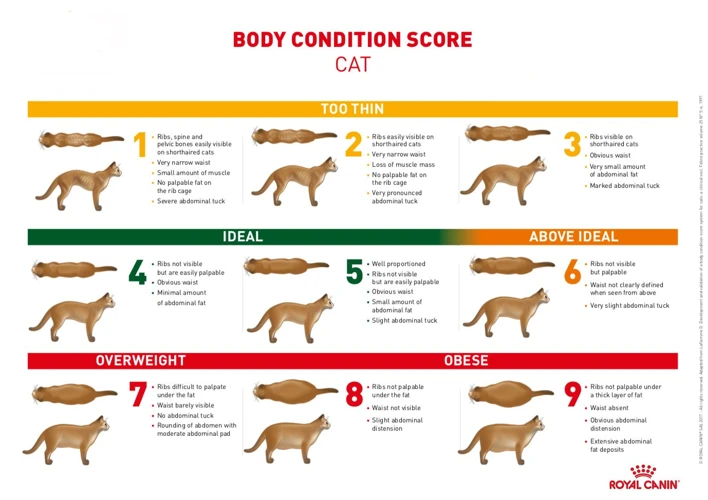
Have you noticed your American Wirehair cat looking a bit heavier than usual? Or, on the contrary, are you concerned that your cat might be underweight? Monitoring your cat’s weight is an important part of their overall health and can prevent various health problems. Luckily, there are a few simple ways to check on your cat’s weight, like body condition scoring, weighing your cat, keeping a food journal, and consulting with your veterinarian. Let’s dive into these methods and learn more about how to monitor your American Wirehair’s weight.
Body Condition Score
Keeping track of your American Wirehair’s body condition score is an important step in helping them maintain a healthy weight. Body condition scoring is a way to assess your cat’s overall body fat percentage, which can tell you if they are underweight, overweight, or at an ideal weight.
To determine your cat’s body condition score, you can use the chart below. This chart considers factors like the shape of your cat’s ribs and belly to give an accurate assessment of their body condition. It is important to consult with your veterinarian if you are unsure how to assess your cat’s body condition score.
| Score | Description |
| 1 | Extremely Thin |
| 2 | Very Thin |
| 3 | Thin |
| 4-5 | Ideal |
| 6 | Overweight |
| 7 | Very Overweight |
| 8-9 | Obese |
You should regularly check your American Wirehair’s body condition score to ensure they are at a healthy weight. It is important to note that an American Wirehair’s ideal body condition score may differ from other breeds or individual cats. Your veterinarian can help you determine your cat’s ideal body condition score and advise you on any necessary changes to their diet or exercise routine to reach and maintain that score.
Weighing Your Cat
Keeping track of your cat’s weight is crucial in ensuring they maintain a healthy weight. Here’s how you can weigh your cat:
- Use a scale: The most accurate way to measure your cat’s weight is by using a scale. Place your cat on the scale and record their weight. You can find scales specifically designed for pets at pet supply stores.
- Weigh yourself: If you don’t have access to a pet scale, weigh yourself and then weigh yourself while holding your cat. Subtract your weight from the combined weight to get your cat’s weight.
- Use visual cues: If you don’t have access to a scale, you can also monitor your cat’s weight by visually observing them. If their ribs and spine are easily visible, they may be underweight. If you can’t feel their ribs and their waist is not visible when viewed from above, they may be overweight.
It’s important to note that weight can fluctuate naturally in cats, so it’s important to monitor their weight over time and consult with your veterinarian if you have any concerns. Additionally, if your cat is overweight or underweight, it’s important to address the issue to prevent health complications.
Keeping a Food Journal
Keeping a food journal is an effective way to track your American Wirehair’s intake and to identify areas where changes can be made in their diet. By writing down everything that your cat eats throughout the day, you can see their overall calorie intake and identify patterns in eating behavior.
To make a food journal, start by creating a table with columns for the date, time of day, type of food, and the amount given. Keeping track of the brand and type of food can also help in identifying ingredients that may be contributing to weight gain.
Here are some tips for keeping a successful food journal:
- Be consistent. Make sure to write down every meal, treat, and snack that your cat consumes.
- Include portion sizes. This will help you keep track of the exact amount of food given.
- Include notes. Did your cat finish all their food or leave some uneaten? Were any treats given outside of regular meal times?
- Get the whole family involved. Make sure everyone who feeds your cat contributes to the food journal.
Keeping a food journal can provide valuable insights into your American Wirehair’s eating behavior and help you make informed decisions about their diet. It can also help your veterinarian in assessing your cat’s overall health and weight management plan. So grab a notebook and start journaling today!
Consulting with Your Veterinarian
When it comes to the health of your American Wirehair cat, consulting with your veterinarian is one of the most important things you can do. Your vet can help you determine your cat’s ideal weight, provide recommendations for weight loss if necessary, and monitor your cat’s progress over time. Here are some things to keep in mind when consulting with your vet:
- Be Honest: It’s important to be honest about your cat’s eating habits, activity level, and any other relevant information. This will help your vet make an accurate assessment and provide effective recommendations.
- Ask Questions: Don’t be afraid to ask questions about your cat’s weight and any recommendations your vet makes. Your vet can provide valuable information about feeding, exercise, and monitoring your cat’s progress.
- Follow Recommendations: If your vet recommends a weight loss plan for your cat, it’s important to follow it as closely as possible. This may include changes to your cat’s diet, exercise routine, or feeding schedule. Your vet can provide guidance and support along the way.
- Monitor Progress: Regular check-ups with your vet can help you monitor your cat’s progress and make any necessary adjustments to their weight loss plan. Your vet may recommend weighing your cat regularly and keeping a food journal to track their progress.
Remember, your vet is there to help you maintain your cat’s health and well-being. If you have any concerns about your cat’s weight or overall health, don’t hesitate to schedule a consultation with your vet. By working together, you can help your American Wirehair maintain a healthy weight and live a happy, healthy life.
How to Help Your Cat Lose Weight
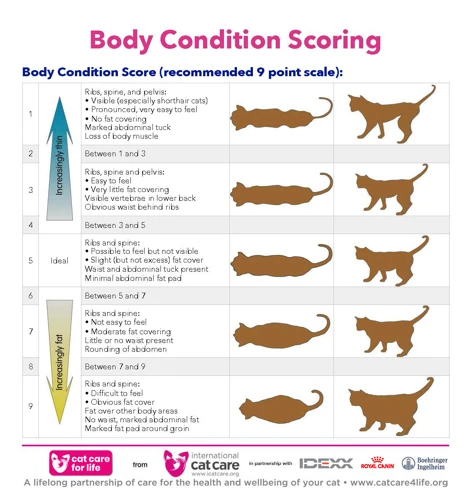
If you have noticed that your American Wirehair is carrying some extra weight, don’t worry. You can help your furry friend lose weight and get healthier. It’s important to remember that weight loss takes time and patience. You’ll need to make some changes to your cat’s diet and exercise routine. In this section, we’ll go over some tips on how to help your cat shed those extra pounds. Remember, it’s important to consult with your veterinarian before making any significant changes to your cat’s diet or exercise routine.
Choosing the Right Food
When it comes to helping American Wirehairs maintain a healthy weight, choosing the right food is crucial. The following table outlines key considerations that can help you select the optimal food for your cat:
| Factors to Consider | Possible Options |
|---|---|
| Caloric content: American Wirehairs require a different number of calories based on their age and activity level. |
|
| Ingredient quality: The quality of ingredients can affect digestion, overall health, and weight management. |
|
| Feeding schedule: How often you feed your cat and what type of food you offer can impact overall caloric intake and weight management. |
|
| Supplements: Some supplements can boost metabolism and support healthy weight management. |
|
Choosing the right food can play a significant role in helping your American Wirehair maintain a healthy weight. Consult with your veterinarian and carefully consider the factors outlined in the table above to make an informed decision about your cat’s diet.
Portion Control
Maintaining proper portion control is pivotal in ensuring your American Wirehair maintains a healthy weight. Overfeeding can quickly lead to weight gain, which can, in turn, result in health issues. Underfeeding, on the other hand, can lead to malnourishment and other health problems. To achieve the right balance, the following guidelines can help:
| Guideline | Description |
| Calculate Daily Caloric Intake | Consult with a veterinarian to determine the number of calories your cat should consume each day based on age, gender, weight, and activity level. |
| Use a Measuring Cup | Use a measuring cup to ensure that you’re providing the appropriate serving size as specified by the cat food packaging. Avoid using “eyeballing” estimates. |
| Avoid Free Feeding | Free feeding, where your cat has access to food all day, can lead to overeating. Instead, provide multiple small meals throughout the day and remove food after 20-30 minutes if your cat doesn’t finish. |
| Keep Treats to a Minimum | Avoid overindulging your cat with treats, which can contribute to significant weight gain. Instead, choose healthy alternatives or use small portions of their regular food as treats. |
| Adjust Portions as Needed | If you notice that your cat is gaining weight, adjust their portion size accordingly. Consult with a veterinarian if you’re unsure of the appropriate action to take. |
By following these guidelines for portion control, you can ensure that your American Wirehair obtains the right balance of nutrition and doesn’t consume excessive calories. Remember, even minor adjustments in your cat’s diet and feeding habits can make a big difference in their overall health and well-being.
Feeding Schedule
Maintaining a consistent feeding schedule can be a simple yet effective way to help your American Wirehair maintain a healthy weight. Here are some tips for establishing a feeding schedule:
- Stick to a routine: Try to feed your cat at the same times every day. Cats are creatures of habit and thrive on routine.
- Divide meals into smaller portions: Instead of feeding your cat one or two large meals a day, consider dividing their daily food intake into smaller, more frequent portions.
- Control portion sizes: Use a measuring cup to ensure that you are feeding your cat the appropriate amount of food. Overfeeding, even with healthy food, can lead to weight gain.
- Avoid free-feeding: Leaving food out throughout the day for your cat to graze on can lead to overeating and weight gain. Instead, offer timed meals that allow your cat to feel satisfied without overindulging.
By establishing a consistent feeding schedule and controlling portion sizes, you can help your American Wirehair achieve and maintain a healthy weight. It is important to note that some cats may require specific feeding schedules or meal plans based on their age, health, or specific dietary needs. Consult with your veterinarian to determine the best feeding schedule for your cat.
Increasing Activity Level
One effective way to help your American Wirehair maintain a healthy weight is by increasing their activity level. Here are a few tips to get your cat moving:
- Interactive toys: Providing interactive toys, such as feather wands or laser pointers, can encourage your cat to play and get moving. Just be sure to always supervise playtime to avoid any accidents.
- Cat trees: Having a cat tree in your home can provide your American Wirehair with a place to climb, scratch, and play. This can help them burn off excess energy and maintain a healthy weight.
- Designated playtime: Setting aside time each day for a designated playtime with your cat can help them get the exercise they need. Try incorporating activities that require them to run or jump, such as playing fetch or chasing a toy.
- Outdoor time: If your American Wirehair is indoor-outdoor, allowing them time to explore outside can also be beneficial for their activity level. Just be sure to supervise them and keep them safe from any potential predators or hazards.
Remember, it’s essential to gradually increase your cat’s activity level, as sudden changes to their routine could cause harm. Coupled with a healthy diet, increasing your American Wirehair’s activity level can help them maintain a healthy weight and live a long, happy life.
Preventing Weight Gain and Maintaining a Healthy Weight
As important as it is to help your American Wirehair lose weight if they are obese, preventing weight gain and maintaining a healthy weight are equally important. With the proper combination of diet, exercise, and environmental enrichment, you can help your cat maintain a healthy weight for years to come. In this section, we’ll cover some essential tips to prevent weight gain and keep your American Wirehair in tip-top shape. So, let’s dive into the strategies that will help you prevent weight gain and maintain your cat’s healthy weight!
Regular Exercise
Ensuring your American Wirehair cat receives regular exercise is essential to maintaining a healthy weight and overall well-being. Physical activity helps cats burn calories, strengthen muscles, and provides mental stimulation. A lack of exercise can lead to weight gain, boredom, and even the development of certain health conditions.
Types of Exercise for Cats
To help your American Wirehair maintain a healthy weight through exercise, it’s important to consider their individual preferences and abilities. Here are some popular types of exercise for cats:
| Type of Exercise | Description |
|---|---|
| Interactive Play | Playing with interactive toys such as feather wands or laser pointers can encourage your cat to run, jump, and climb, promoting physical activity and mental stimulation. |
| Scratching Posts | Providing a scratching post or pad can encourage your cat to engage in stretching and scratching, which can improve muscle tone and flexibility. |
| Outdoor Access | If you live in a safe area, allowing your cat access to the outdoors can provide opportunities for exploring, climbing, and walking which are excellent forms of exercise. |
| Obstacle Courses | Creating an obstacle course with boxes, tunnels, and ramps can motivate your cat to run, jump, and climb, simulating natural hunting behaviors and providing both physical and mental exercise. |
| Walking on a Leash | American Wirehairs can be trained to walk on a leash, giving them a chance to explore outside while remaining safe and controlled. This can promote cardiovascular health and provide mental stimulation. |
Exercise Frequency and Duration
The frequency and duration of exercise depends on your cat’s age, physical abilities, and personal preferences. Ideally, American Wirehairs should receive at least three play sessions per day, each lasting between 10-20 minutes. This can be increased or decreased as needed depending on your cat’s response. It’s important to mix up the types of exercise to prevent boredom and keep your cat engaged.
Tips for Encouraging Exercise
If your cat is reluctant to exercise, here are some tips to motivate them:
- Offer a variety of toys and play styles to keep things interesting.
- Set up a designated play space with scratching posts and climbing opportunities.
- Use treats or a favorite toy to encourage your cat’s participation.
- Make sure to end play sessions on a positive note, such as allowing your cat to “catch” their toy or treating them with a special reward.
- Consult with your veterinarian if your cat shows no interest in exercise or has underlying health conditions that may affect their ability to exercise.
By providing regular exercise, you can help your American Wirehair maintain a healthy weight and live a happy, active life.
Environmental Enrichment
Cats are natural hunters and predators and require mental and physical stimulation to stay healthy and happy. Environmental enrichment can help fulfill these instincts and prevent boredom, which can lead to overeating and weight gain. Here are some tips for providing environmental enrichment for your American Wirehair:
- Provide a scratching post: American Wirehairs love to scratch and climb, so providing a sturdy scratching post can fulfill their natural behaviors. Scratching posts also provide exercise and can help prevent destructive scratching around the house.
- Offer interactive toys: Interactive toys, such as puzzle feeders or wand toys, can stimulate your cat’s mind and encourage physical activity. These toys can also help slow down eating and prevent overeating.
- Create hiding spots: Cats love to have cozy hiding spots to retreat to when they feel stressed or anxious. Providing hiding spots, such as boxes or cat caves, can make your American Wirehair feel more secure and relaxed.
- Rotate toys and hiding spots: To prevent boredom, it’s important to rotate your cat’s toys and hiding spots every few weeks. This can keep them interested and engaged in their environment.
- Provide access to windows: Cats love to watch birds and other wildlife outside, so providing access to windows can be a great form of environmental enrichment. Make sure the windows are safe and secure to prevent any accidents.
- Consider adding cat perches: Cat perches or shelves can provide a high vantage point for your cat to perch on and observe their surroundings. This can also provide exercise and stimulation.
By providing environmental enrichment for your American Wirehair, you can prevent boredom and overeating, and help maintain a healthy weight. It’s important to remember that each cat is unique and may have different preferences when it comes to toys and hiding spots. Experimenting with different types of environmental enrichment can help you find what works best for your furry friend.
Regular Veterinary Check-Ups
It is important to take your American Wirehair cat for regular veterinary check-ups to ensure that their weight and overall health is being monitored properly. During these check-ups, your veterinarian will check your cat’s weight, body condition score, and overall health. They may also recommend dietary and lifestyle changes based on your cat’s individual needs.
Some of the benefits of regular veterinary check-ups for your American Wirehair cat include early detection of health issues, including those that can lead to weight gain or loss. Your veterinarian may also check for conditions such as diabetes, thyroid issues, or other medical conditions that can affect your cat’s weight.
It is important to establish a good relationship with your veterinarian and to schedule regular check-ups according to their recommendation. Your veterinarian may recommend more frequent visits for kittens or senior cats, or those with underlying health conditions. In addition to the physical check-up, your veterinarian may also discuss your cat’s diet and activity level, and make recommendations for improving their overall health and maintaining a healthy weight.
Remember, prevention is key to keeping your American Wirehair cat healthy and maintaining a healthy weight. Regular veterinary check-ups are an important part of this prevention. Use the following table to keep track of your cat’s veterinary visits:
| Date | Reason for Visit | Weight | Body Condition Score | Notes |
|---|---|---|---|---|
| MM/DD/YYYY | Annual Check-Up | 10 lbs | 4/9 | Healthy weight and condition |
| MM/DD/YYYY | Spay/Neuter Surgery | 9 lbs | 5/9 | Temporary weight gain due to surgery |
| MM/DD/YYYY | Sick Visit | 11 lbs | 3/9 | Diagnosed with diabetes, recommended dietary changes and medication |
By recording your cat’s weight, body condition score, and any notes from your veterinarian after each visit, you can monitor their progress over time and make any necessary changes to maintain a healthy weight. With regular veterinary check-ups and close monitoring, your American Wirehair cat can lead a long and healthy life.
Maintaining a Healthy Diet
A healthy diet is crucial for American Wirehairs to maintain a healthy weight. Cats are obligate carnivores, which means they need a diet that is high in protein. However, not all sources of protein are created equal. Your cat needs a high-quality source of protein that is easily digestible and contains all of the essential amino acids they need. Here are some tips for maintaining a healthy diet for your American Wirehair:
- Choose High-Quality Cat Food: Look for cat food that lists a high-quality source of protein, like chicken, turkey, or fish, as the first ingredient. Avoid cat food that contains fillers like corn or wheat gluten, as these are not easily digestible and can lead to weight gain.
- Avoid Free-Feeding: Cats will often eat more than they need if they have access to food all day long. Instead, feed your cat on a schedule, with two to three small meals per day.
- Limit Treats: Treats should make up no more than 10% of your cat’s daily caloric intake. Choose healthy treats that are low in calories and high in protein, like freeze-dried chicken or fish.
- Consider a Weight-Loss Diet: If your American Wirehair is overweight or obese, you may need to switch to a weight-loss diet. These diets are low in calories and high in protein, making them an effective way to help your cat lose weight.
Remember to consult with your veterinarian before making any changes to your cat’s diet. They can help you choose the right food and make recommendations based on your cat’s individual needs. By maintaining a healthy diet, you can help your American Wirehair maintain a healthy weight and avoid the health risks associated with obesity.
Conclusion
In conclusion, maintaining a healthy weight is crucial for the overall well-being and longevity of American Wirehair cats. Obesity can lead to serious health risks, including diabetes, heart disease, and joint problems, while being underweight can lead to a weakened immune system and organ failure.
There are several factors that can affect a cat’s weight, including diet, activity level, age, gender, and breed predispositions. Monitoring your cat’s weight and body condition score, as well as consulting with your veterinarian, can help ensure they are at a healthy weight.
If your American Wirehair cat needs to lose weight, it’s important to choose the right food, control portions, establish a feeding schedule, and increase their activity level. Preventing weight gain and maintaining a healthy weight can be achieved through regular exercise, environmental enrichment, regular veterinary check-ups, and maintaining a healthy diet.
Remember, every cat is unique, and it’s important to tailor their weight management plan to their individual needs and lifestyle. By following these tips and tricks, you can help your American Wirehair cat achieve and maintain a healthy weight, leading to a happier and healthier life.
Frequently Asked Questions
1. How much should an American Wirehair weigh?
The average weight range for an American Wirehair is between 8-12 pounds.
2. Can obesity lead to health problems in cats?
Yes, obesity can lead to various health problems such as diabetes, heart disease, and joint problems.
3. How can I tell if my cat is overweight?
You can tell if your cat is overweight by performing a body condition score which involves examining your cat’s ribs, spine, and waist.
4. Can underfeeding a cat lead to health problems?
Yes, underfeeding a cat can lead to malnourishment, muscle loss, and other health problems.
5. Do age and gender affect a cat’s weight?
Yes, age and gender can affect a cat’s weight as older cats tend to weigh less and male cats tend to weigh more than female cats.
6. How often should I weigh my cat?
It is recommended to weigh your cat every 2-4 weeks when on a weight-loss program and every 6 months for maintenance.
7. Can overfeeding treats affect my cat’s weight?
Yes, overfeeding treats can contribute to weight gain in cats so it’s important to limit the amount of treats given.
8. Should I consult my veterinarian before starting a weight-loss program for my cat?
Yes, it’s best to consult with your veterinarian before starting any weight-loss program for your cat as they can provide tailored advice and monitor your cat’s progress.
9. Can increased activity level help with weight loss in cats?
Yes, increased activity level can help with weight loss in cats by burning more calories and building muscle mass.
10. Can indoor cats still get enough exercise to maintain a healthy weight?
Yes, indoor cats can still get enough exercise to maintain a healthy weight by providing them with toys, climbing structures, and interactive playtime.

